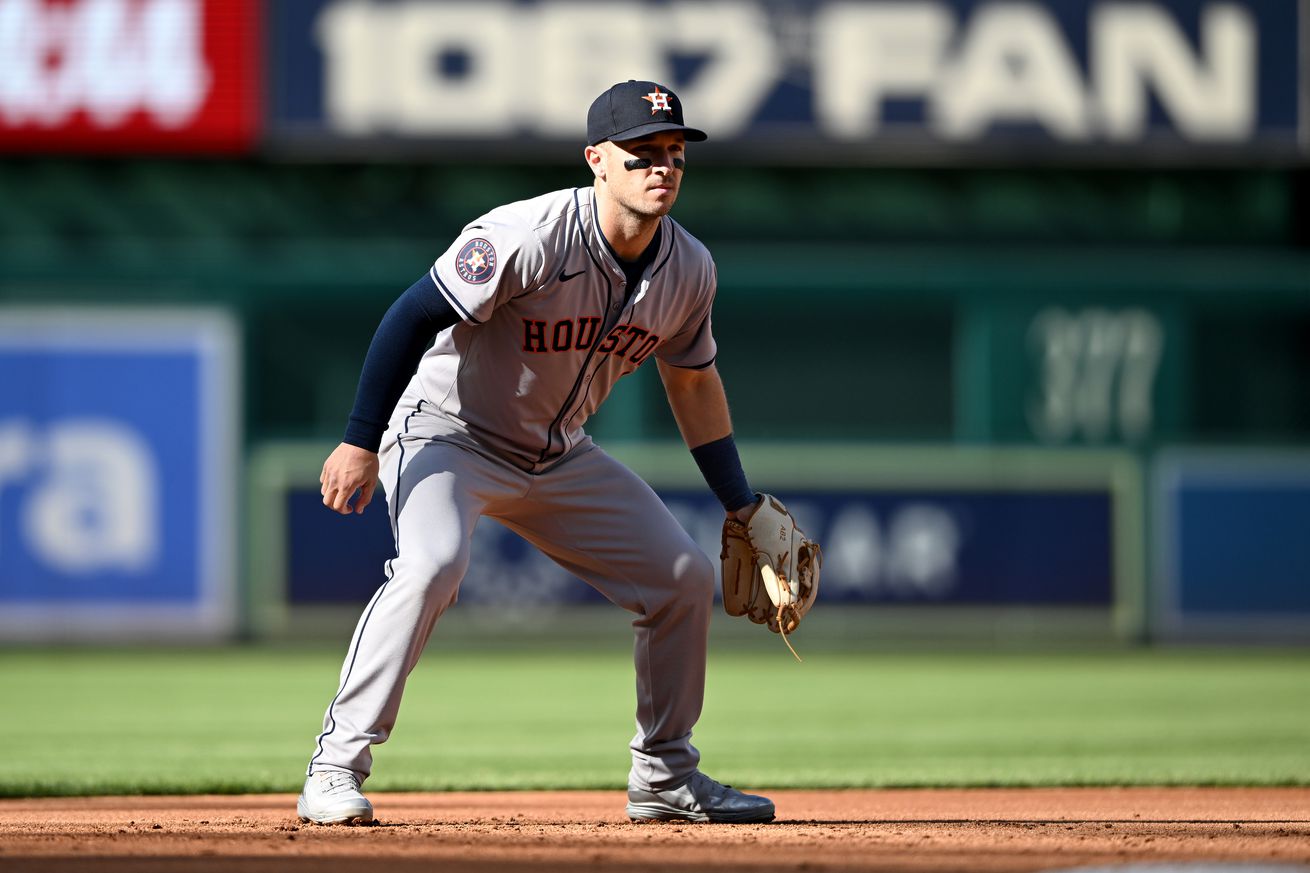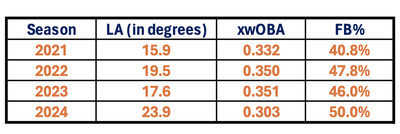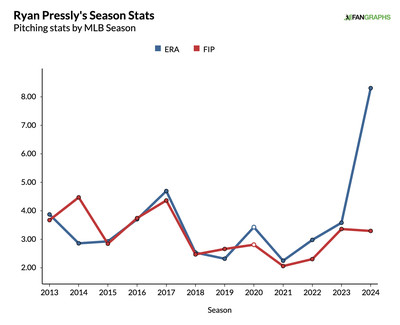
Some quick thoughts about Alex Bregman’s early slump, Ryan Pressly’s not-so-good April, and swing speed.
I have an ever-evolving list of notes devoted to baseball. It is normally related to research or topics that I find interesting, even if I ultimately don’t write much about it. Some are only mere points of curiosity. There are other players and teams not involved with the Astros on this list, too. For the purposes of this site, I sometimes revisit this list when I want to explore a topic in further detail at a later point in the season, especially when the data is more reliable.
There are also instances that I feel like I have something, but I don’t know how to quite put it all together. At least, yet. Again, I could explore it further into the season or when I have a bit more free time to do the topic justice. I can’t tell you how many times I have the general framework for a post in my head, but when I sit down to write it out, I just can’t seem to make it work at that moment. Sometimes I find out that more research is warranted. Perhaps when I revisit the topic in a couple of days, the words will flow better from my brain to my fingertips to the keyboard. Honestly, that’s how today’s post initially started. I had an idea in my mind, but when I attempted to write it out, it wasn’t coming together as I initially hoped for.
Instead, this post is more of, for lack of a better term, a notes dump. Topics that I found interesting. Observations that could be something I’ll later explore. Or items of interest that deserve a quick shout-out, but are outside of my wheelhouse in terms of analysis and writing.
Note No. 1 – Alex Bregman’s Early Slump
José Abreu’s dreadful start to the season is masking, at least to some degree, Alex Bregman’s less dreadful start to the season. While his normal plate discipline remains present — 11.6% BB% and 11.6% K% — the star third baseman hasn’t produced much value yet at the plate. A 76 wRC+, which is 24% below the league average, along with a noticeable lack of pop has hampered the Astros’ lineup, especially with runners in scoring position.
One would think at first glance that Bregman is having issues putting the ball in the air. Maybe more groundballs? But when you watch the games, and dig deeper into the data, Bregman’s fly ball rate is the actual problem, specifically that he isn’t the ball far enough or getting under pitches more when he does make contact. That increase in fly balls has led to more outs instead of base hits and home runs (only five doubles on the season). In other words, the quality of contact hasn’t been great.

This topic is likely one that I’ll explore a bit more in the coming weeks, but it is interesting to note that Bregman’s average hit distance in 2024 is 158 feet. In 2022, it was 177 feet. In 2023, it was 170 feet. We’re talking about a small sample so far in 2024, but early indications point to a change in approach at the plate might be warranted.
Note No. 2 – Ryan Pressly’s Not-So-Good April
We’re all familiar with Ryan Pressly’s issues to start the season. An 8.31 ERA is unsightly. Part of Houston’s issues this season lie in the fact that the bullpen has imploded too much already. Pressly is one of those problems.
But will those struggles last? I don’t think so, at least at this current level based on his peripherals. While his 8.31 ERA is ghastly, there are indications that better days are ahead. For example, Pressly’s 3.29 FIP.

Yes, FIP is descriptive, not predictive. But Pressly’s FIP at least indicates that when we strip away luck, defense, and sequencing, and concentrate on the aspects that a pitcher can more control, then the right-hander’s performance thus far is placed in a better light.
At first glance, Pressly has had a bit of bad luck so far — .464 BABIP — with a bit of control issues. There has also been a bit of an upswing in hard-hit rates along with line drives, but I hope that those figures eventually regress. Even though it doesn’t exactly feel like it, the season is still young. With that said, I am monitoring his velocity, as his four-seam is averaging around 93.8 MPH compared to 94.7 MPH a season ago. Of course, Pressly has been known to take a couple of weeks to ramp up his velocity at the start of a season, so it could simply be that again.
Note No. 3 – Swing Speed Aging Curve And José Abreu
We all know that time is undefeated. Sooner or later, a player will reach an age when their abilities on the baseball field will start to diminish. The question is when will that initial descent begin, and how quickly it progresses. For some players, they age quite gracefully. Others decline faster than expected, but they’re still able to squeeze out a couple of more useful seasons before the inevitable end. There are instances, however, when the decline is like a steep cliff. The drop-off in performance is not only startling, it is fast. Almost overnight.
I’m afraid Abreu falls into that last category. I mean, a -32 wRC+ speaks for itself, even by the last week or so of April. One thing I’ve wondered is if the first baseman’s decline is related to any decline in swing speed. And, to be fair, I don’t know what Abreu’s average swing speed is. But thanks to Tom Tango, we now have an aging curve for swing speed and it is jarring to see the stark drop-off in a player’s later thirties, even if it was expected.
#Statcast Aging Curve for Swing Speed
I wouldn’t pay too much attention to very left of chart. I’d just treat it swing speed is roughly flat until roughly age 31. After that, drop is quick
Which makes sense with everything we know. We didn’t know the magnitude. Now we do. pic.twitter.com/Nh4p5jKmdL
— Tangotiger (@tangotiger) April 22, 2024
Abreu, by the way, is 37 years old. If swing speed is one culprit behind his decline, then the outlook certainly doesn’t look promising for any dramatic improvement.